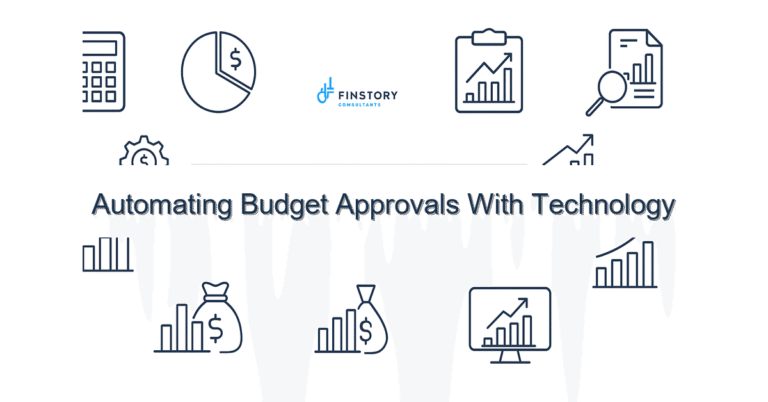Why Budgeting is a Leadership Skill, Not Just a Finance Task
You’re tired of budgets that arrive late, miss the mark, or become Excel graveyards. You know finance owns the numbers but feel the product falls short of driving better care and smoother operations. That frustration matters.
Summary: When leaders treat budgeting as a strategic leadership activity—connecting goals, operations, and incentives—they get faster cycles, fewer surprises, and budgets that actually guide decisions at the point of care.
What’s the real problem?
Too often budgeting is treated as a finance project: balance sheets, forecasts, and reconciliation. That’s necessary, but it misses the bigger job. Budgeting should translate strategy into daily choices across clinical, supply chain, and administrative teams.
- Budgets arrive late or after decisions are made, so they don’t influence resource allocation.
- Departments feel budgets are arbitrary or disconnected from operational realities.
- Finance spends weeks reconciling numbers while leaders want actionable insights now.
- Variance explanations are backward-looking and don’t prevent future gaps.
What leaders get wrong
Leaders often assume budget ownership is just pushing numbers down from the top or expecting finance to fix process problems. That creates a passive relationship between finance and operations.
- Thinking the CFO’s office should be the single owner. Budgeting requires distributed ownership across clinical and operational leaders.
- Focusing only on line-item control instead of the outcomes budget should enable—like throughput, patient experience, or staff retention.
- Waiting until final numbers are ready to engage stakeholders, which kills buy-in and causes last-minute changes.
A better approach
Treat budgeting as a leadership rhythm: a regular process that aligns goals, tests assumptions, and reallocates resources. Here’s a simple framework you can use.
- 1) Set outcome-focused guardrails. Define 3–5 measurable goals (e.g., reduce ED length of stay by 10% or cut supply costs per case by 7%). Finance translates these into budget levers.
- 2) Involve operational owners early. Bring service line directors and nursing leaders into scenario planning, not just approval meetings.
- 3) Convert assumptions into dashboards. Make key assumptions visible and trackable weekly, not hidden in a workbook.
- 4) Run short feedback loops. Use monthly or even biweekly budget reviews to test assumptions, reallocate, and surface risks.
- 5) Reward outcomes, not just adherence. Tie part of the operating plan to measurable improvements that reflect strategic priorities.
Real-world proof: a mid-sized community hospital we worked with moved from a 10-week budget cycle to a 5-week cycle by shifting the first two weeks to leadership workshops instead of spreadsheet consolidation. That change reduced budget rework by 40% and allowed clinical leaders to shape staffing and supply assumptions up front.
Quick implementation checklist
- Schedule a two-day budgeting kickoff with clinical and operational leaders before finance builds the first draft.
- Agree on 3 strategic metrics that budgets must support (e.g., capacity, quality, and cost per case).
- Map the top 10 assumptions (volume, length-of-stay, wage inflation, supply costs) and assign an owner to each.
- Create a one-page dashboard template for leaders to review weekly.
- Lock a single source of truth for staffing rosters and FTE assumptions (no more side spreadsheets).
- Use scenario templates: conservative, baseline, and stretch—with clear trigger points for action.
- Limit line-item approvals to exceptions above a set threshold to speed sign-off.
- Document the decision rights: who reallocates funds, who approves hires, and who signs off on trade-offs.
- Run a 30/60/90-day review after budget adoption to course-correct early.
What success looks like
- Budget accuracy: reduce forecast variance from ±8% to ±3–4% within a year.
- Cycle time: cut the budget planning cycle from 10 weeks to 4–6 weeks.
- Decision speed: halve the time to approve staffing or capital reallocations.
- Operational impact: move at least one strategic metric (e.g., ED LOS) by 5–10% in the first year.
- Efficiency: free 20–30% of finance team time spent on reconciliation so they can focus on insights.
Risks & how to manage them
- Risk: Overcomplicating the process. Mitigation: Start with three outcomes and five assumptions; expand only when those are stable.
- Risk: Turf wars between finance and operations. Mitigation: Define decision rights upfront and use data-driven trade-offs during budget workshops.
- Risk: Data quality slows you down. Mitigation: Identify one reliable data source (payroll, ADT, or procurement) and automate feeds early.
Tools & data
Leadership reporting depends on clean, timely data. Invest in finance automation to reduce manual uploads and cut reconciliation time. Power BI (or similar) lets you convert assumptions into live dashboards that clinical leaders can understand.
Combine automated feeds from payroll, ADT, and procurement with a lightweight modeling layer. That keeps the numbers consistent and lets leaders run what-if scenarios without waiting for a finance sprint.
Next steps
Start by convening a short leadership workshop to surface your top assumptions and three outcome metrics. Use that session to identify the data owners and agree on a weekly reporting cadence.
If you want practical help building the process, dashboards, and decision playbooks, reach out—Finstory works with finance and operations to bridge this exact gap.
Work with Finstory. If you want this done right—tailored to your operations—we’ll map the process, stand up the dashboards, and train your team. Let’s talk about your goals.
📞 Ready to take the next step?
Book a 20-min call with our experts and see how we can help your team move faster.
Prefer email or phone? Write to info@finstory.net
or call +91 44-45811170.






